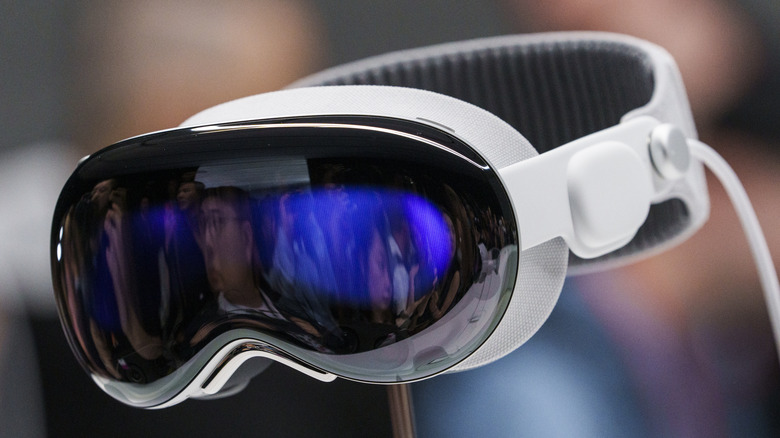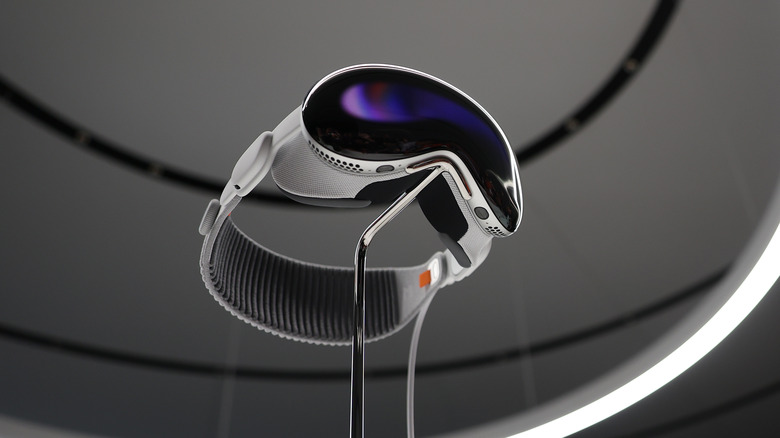Apple May Offer A Cheaper Vision Headset In 2025
Apple's Vision Pro mixed reality headset had its highly-anticipated introduction at WWDC 2023 earlier this month, but it appears that a second-gen iteration and a more affordable trim are already in the works. Starting with the next-gen Vision Pro, it will supposedly be faster with a more advanced sensor array. However, it is the rumored budget-friendly model that will really push Apple's idea into the mainstream.
This won't be the first time that we are hearing about a more economical version, though. In the latest edition of Mark German's PowerOn newsletter, Bloomberg notes that the cheaper version of Vision Pro is in the test phase and might arrive in 2025. The headset, which Apple might put up on the shelves as Vision or Vision One, will be significantly cheaper than the $3,500 Vision Pro.
To recall, when Apple announced the price of its headset, the live audience at its Apple Campus gasped audibly in surprise. At the moment, there is little that we know about the headset, its internal hardware, or a rough asking price, but Gurman made a few educated guesses about the Vision Pro perks that will be watered down.
Why would Apple want to make a cheaper Vision headset? Analysts say the Vision Pro isn't exactly a mainstream consumer device at $3,500, adding that if Apple really wants to win the "spatial computing race," it needs to make the hardware more accessible. That's where a cheaper headset fits.
What goes out to reduce costs?
The Vision Pro is brimming with arguably the most advanced XR tech out there, but three of its biggest strengths are the pixel-dense micro-OLED screens, the dual-processor design, and plenty of sensors for environmental visualization and gesture control. Gurman predicts that Apple could do away with the R1 + M2 chip design on the Vision Pro, in favor of a single M-series silicon on its cheaper headset, or even an A-series chip borrowed from iPhones.
Next, Apple could also offer toned-down display hardware. The Vision Pro comes armed with a custom micro‑OLED display system crammed with 23 million pixels, which Apple claims can deliver a 4K resolution per eye. Apple could downgrade it to a more mainstream LCD unit for a more affordable model. For comparison, Meta's own high-end Quest Pro mixed reality headset offers two LCD panels, each delivering a resolution of 1800 x 1920 pixels per eye.
Finally, Apple could also cut down on the number of sensors to keep the costs down, but standout features like gesture tracking and EyeSight could still make their way to the cheaper Apple headset. But these are early rumors at best, and depending upon the supply chain situation and technical success during development, the launch timeline could move further down the road. It is unclear how much Apple is going to charge for the budget-friendly headset, but the company would want to sell it in the same $1,000 ballpark as the Meta Quest Pro.

